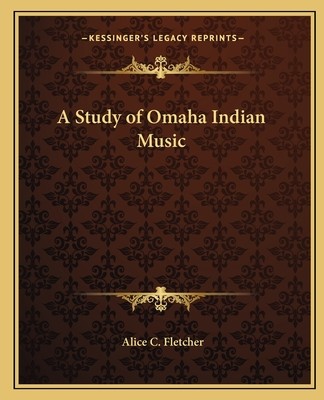
- We will send in 10–14 business days.
- Author: Alice C Fletcher
- Publisher: Kessinger Publishing
- ISBN-10: 1162633905
- ISBN-13: 9781162633909
- Format: 19.1 x 23.5 x 0.8 cm, softcover
- Language: English
- SAVE -10% with code: EXTRA
Reviews
Description
1893. In many respects, Alice Fletcher was a typical Victorian intellectual, articulate, energetic, and active in a variety of social movements and women's organizations. She began her studies of American Indian life under the private tutelage of Frederick W. Putnam, director of Harvard University's Peabody Museum. Fletcher's long association with the Omaha people began at an 1880 Boston literary gathering with an introduction to Francis and Susette La Flesche, the son and daughter of Omaha chief Joseph La Flesche. Prior to this meeting, her anthropology lectures were primarily based on library research and a small amount of archaeological fieldwork. Fletcher decided she wanted to observe Indian culture directly and made arrangements to visit the Omaha reservation the following year. Over the next three decades, she traveled extensively throughout the West, studying not only Omaha traditions but those of the Pawnee, Sioux, Arapaho, Cheyenne, Chippewa, Oto, Osage, Nez Perce, Ponca, and Winnebago as well, but she is best known for her work on Omaha music and culture.
EXTRA 10 % discount with code: EXTRA
The promotion ends in 18d.02:04:16
The discount code is valid when purchasing from 10 €. Discounts do not stack.
- Author: Alice C Fletcher
- Publisher: Kessinger Publishing
- ISBN-10: 1162633905
- ISBN-13: 9781162633909
- Format: 19.1 x 23.5 x 0.8 cm, softcover
- Language: English English
1893. In many respects, Alice Fletcher was a typical Victorian intellectual, articulate, energetic, and active in a variety of social movements and women's organizations. She began her studies of American Indian life under the private tutelage of Frederick W. Putnam, director of Harvard University's Peabody Museum. Fletcher's long association with the Omaha people began at an 1880 Boston literary gathering with an introduction to Francis and Susette La Flesche, the son and daughter of Omaha chief Joseph La Flesche. Prior to this meeting, her anthropology lectures were primarily based on library research and a small amount of archaeological fieldwork. Fletcher decided she wanted to observe Indian culture directly and made arrangements to visit the Omaha reservation the following year. Over the next three decades, she traveled extensively throughout the West, studying not only Omaha traditions but those of the Pawnee, Sioux, Arapaho, Cheyenne, Chippewa, Oto, Osage, Nez Perce, Ponca, and Winnebago as well, but she is best known for her work on Omaha music and culture.


Reviews